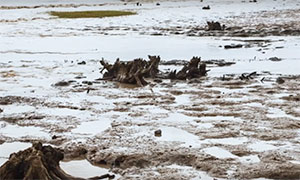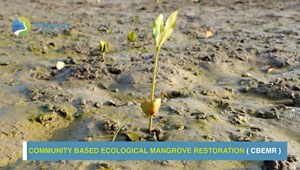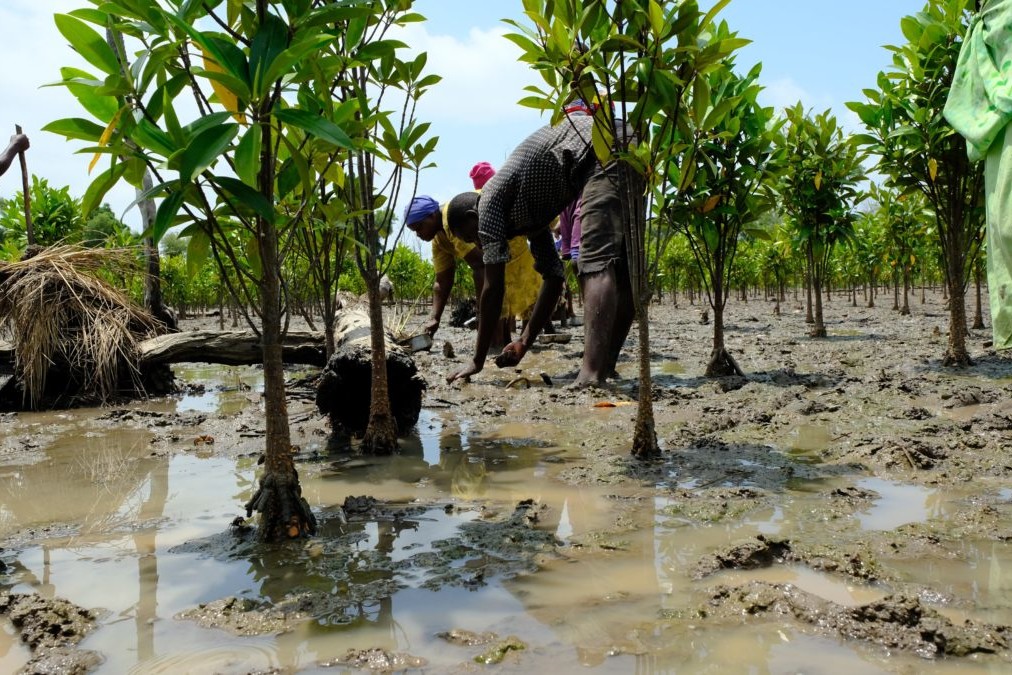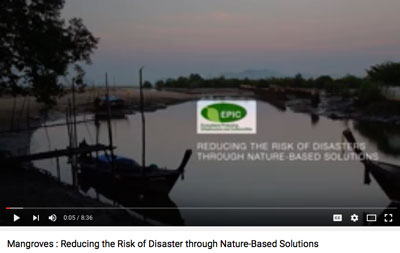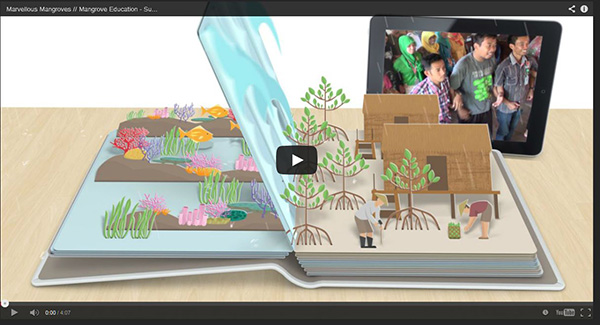MAP News Issue #570 – April 22, 2023
The MAP News | |
Sea Grant Blue Carbon Law Symposium May 17-18, 2023 in Athens, GAFEATURED STORYHappy Earth Day! We are now taking entries for the 22nd annual Mangrove Art Contest  GLOBAL – We would like to invite children from your country to join in this fantastic, creative and educational competition. It is an opportunity for the younger generation to learn about the vital role Mangroves play in the lives of coastal communities and marine life around the world whilst letting them explore their imagination and have fun when creating their pieces of art. The competition is open to all children worldwide, with selected winners published in the 2024 calendar to be distributed internationally to raise awareness of mangrove forest ecology. This colorful calendar has increased in popularity since its first publication in 2002. The 2024 calendar is our 22nd edition. We would like to invite children from your country to join in this fantastic creative and educational competition. It is an opportunity for the younger generation to learn about the vital role Mangroves play in the lives of coastal communities and marine life around the world whilst letting them explore their imagination and have fun when creating their pieces of art.Help us make this next calendar contest more successful than ever! Non-profit organizations, NGOs, schools, teachers, and other groups are invited to help organize local calendar contests and help MAP to get students involved. For any questions, contact Monica Gutierrez-Quarto, the international art competition organizer. GLOBAL – We would like to invite children from your country to join in this fantastic, creative and educational competition. It is an opportunity for the younger generation to learn about the vital role Mangroves play in the lives of coastal communities and marine life around the world whilst letting them explore their imagination and have fun when creating their pieces of art. The competition is open to all children worldwide, with selected winners published in the 2024 calendar to be distributed internationally to raise awareness of mangrove forest ecology. This colorful calendar has increased in popularity since its first publication in 2002. The 2024 calendar is our 22nd edition. We would like to invite children from your country to join in this fantastic creative and educational competition. It is an opportunity for the younger generation to learn about the vital role Mangroves play in the lives of coastal communities and marine life around the world whilst letting them explore their imagination and have fun when creating their pieces of art.Help us make this next calendar contest more successful than ever! Non-profit organizations, NGOs, schools, teachers, and other groups are invited to help organize local calendar contests and help MAP to get students involved. For any questions, contact Monica Gutierrez-Quarto, the international art competition organizer.
GLOBAL Can deep learning help us save mangrove forests? AFRICA ‘They want to silence us’: Uganda cracks down on anti-oil protest The government is trying to silence those who are against the pipeline  TANZANIA – EACOP is a massive crude oil pipeline that will involve the transportation of crude oil from Hoima in Uganda to a Tanzanian port located in Chongoleani village, in Tanga region. It will cover 1,445 kilometres in Uganda and Tanzania, but 80 per cent of the land it will go through is in Tanzania. Local communities depend on land as the crucial resource to support their livelihoods, which consist mostly of farming and livestock keeping, so if their land is taken or ruined by the pipeline, they will be seriously affected. The project is therefore going to affect the development of many communities and impact negatively on any effort to create a sustainable and liveable local environment. But EACOP will not only affect people; it will also pose a threat to the animals that depend on the land that will be taken up by this project. As most activists and CSOs have noticed, the government is trying to silence those who are against the pipeline. Some of us have raised our concerns since the very beginning of the project but our questions have not been addressed and the project has continued regardless. TANZANIA – EACOP is a massive crude oil pipeline that will involve the transportation of crude oil from Hoima in Uganda to a Tanzanian port located in Chongoleani village, in Tanga region. It will cover 1,445 kilometres in Uganda and Tanzania, but 80 per cent of the land it will go through is in Tanzania. Local communities depend on land as the crucial resource to support their livelihoods, which consist mostly of farming and livestock keeping, so if their land is taken or ruined by the pipeline, they will be seriously affected. The project is therefore going to affect the development of many communities and impact negatively on any effort to create a sustainable and liveable local environment. But EACOP will not only affect people; it will also pose a threat to the animals that depend on the land that will be taken up by this project. As most activists and CSOs have noticed, the government is trying to silence those who are against the pipeline. Some of us have raised our concerns since the very beginning of the project but our questions have not been addressed and the project has continued regardless.Towards International Women’s Day 2023
AMERICASMangrove Restoration in Costa Rica: A Collaborative Effort A New Local Mapping Project Aims to Protect Mangroves  USA – As we know from living on the Suncoast, mangroves are all around us. They grow along almost every coastline, provide habitat for fish and other wildlife, protect our homes from destructive storms and erosion, maintain clean water, and combat climate change, thanks to their carbon-storing abilities. Still, even with their immense beauty and vital importance to our community, mangroves are threatened in our area. To stand up for the trees, Suncoast Waterkeeper has teamed up with Exspanse Artificial Intelligence, Dimensional Geomatics and New College of Florida on a mangrove mapping project, which will track mangrove growth and conditions along northern Sarasota Bay, Palma Sola Bay, southern Tampa Bay, Terra Ceia Bay and the Manatee River. Training for the project starts this month, when Suncoast Waterkeeper and New College data science graduate students will learn how to operate drones, utilizing photogrammetry to measure and map the local mangroves. (Photogrammetry is the act of deriving precise measurements from photographs.) The training, led by Dimensional Geomatics, will provide a standard operating procedure for community and student-based mapping using drone imagery. Exspanse, based out of Longboat Key, will then provide its modeling platform to New College data science students for the hands-on experience of building, training and deploying models using data from the project. USA – As we know from living on the Suncoast, mangroves are all around us. They grow along almost every coastline, provide habitat for fish and other wildlife, protect our homes from destructive storms and erosion, maintain clean water, and combat climate change, thanks to their carbon-storing abilities. Still, even with their immense beauty and vital importance to our community, mangroves are threatened in our area. To stand up for the trees, Suncoast Waterkeeper has teamed up with Exspanse Artificial Intelligence, Dimensional Geomatics and New College of Florida on a mangrove mapping project, which will track mangrove growth and conditions along northern Sarasota Bay, Palma Sola Bay, southern Tampa Bay, Terra Ceia Bay and the Manatee River. Training for the project starts this month, when Suncoast Waterkeeper and New College data science graduate students will learn how to operate drones, utilizing photogrammetry to measure and map the local mangroves. (Photogrammetry is the act of deriving precise measurements from photographs.) The training, led by Dimensional Geomatics, will provide a standard operating procedure for community and student-based mapping using drone imagery. Exspanse, based out of Longboat Key, will then provide its modeling platform to New College data science students for the hands-on experience of building, training and deploying models using data from the project. Mangroves common in South Florida are moving north ASIA How India’s coastal forests could become a goldmine 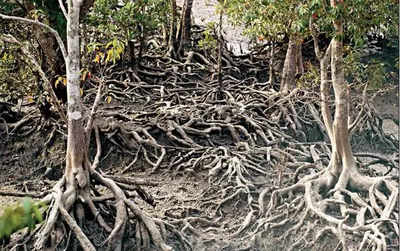 INDIA – They lack the solemnity of a banyan tree and the stature of a deodar, but mangroves are second to none in the fight against climate change. Be it the Sundarbans in Bengal or the Gulf of Kachchh mangroves in Gujarat, they have been soaking up carbon dioxide with about five times the efficiency of terrestrial trees. That’s because they absorb this greenhouse gas from both the ground and the air with their aerial roots. Recognising the importance of mangroves, the Centre had announced the Mangrove Initiative for Shoreline Habitats & Tangible Incomes (MISHTI) scheme in this year’s Budget. Under the scheme, mangroves will be planted along India’s coasts and on salt pan lands. However, experts say the scheme’s success will depend on focused surveys to understand the mangrove ecosystems. Recognising the importance of mangroves, the Centre had announced the Mangrove Initiative for Shoreline Habitats & Tangible Incomes (MISHTI) scheme in this year’s Budget. Under the scheme, mangroves will be planted along India’s coasts and on salt pan lands. However, experts say the scheme’s success will depend on focused surveys to understand the mangrove ecosystems. “Conservation, plantation, and restoration of mangroves need to be sped up,” says Kathiresan Kandasamy , former director and honorary professor of the Department of Marine Science at Annamalai University. INDIA – They lack the solemnity of a banyan tree and the stature of a deodar, but mangroves are second to none in the fight against climate change. Be it the Sundarbans in Bengal or the Gulf of Kachchh mangroves in Gujarat, they have been soaking up carbon dioxide with about five times the efficiency of terrestrial trees. That’s because they absorb this greenhouse gas from both the ground and the air with their aerial roots. Recognising the importance of mangroves, the Centre had announced the Mangrove Initiative for Shoreline Habitats & Tangible Incomes (MISHTI) scheme in this year’s Budget. Under the scheme, mangroves will be planted along India’s coasts and on salt pan lands. However, experts say the scheme’s success will depend on focused surveys to understand the mangrove ecosystems. Recognising the importance of mangroves, the Centre had announced the Mangrove Initiative for Shoreline Habitats & Tangible Incomes (MISHTI) scheme in this year’s Budget. Under the scheme, mangroves will be planted along India’s coasts and on salt pan lands. However, experts say the scheme’s success will depend on focused surveys to understand the mangrove ecosystems. “Conservation, plantation, and restoration of mangroves need to be sped up,” says Kathiresan Kandasamy , former director and honorary professor of the Department of Marine Science at Annamalai University. Cross-sectional research into mangrove blue carbon: A tale from two islands  KOREA – The Indo-West Pacific Region, which includes East Asia, hosts the most diverse mangrove ecosystems in the world. Their distribution area is gradually expanding, and migrating, owing to climate change. To better understand this phenomenon and learn how to maintain healthy mangrove systems, researchers with the National Institute of Forest Science (NIFoS) in the Republic of Korea have been working with the Center for International Forestry Research and World Agroforestry (CIFOR-ICRAF), Indonesia’s National Research and Innovation Agency and Udayana University in Denpasar, Bali Province. The Korean Peninsula is in the northernmost sub-tropical climate zone. Two species of semi-mangrove trees grow there, including on the southernmost Jeju Island, and their range has been expanding incrementally as temperatures increase, indicating potential for true mangroves to be established in Korea. The island of Bali in Indonesia is home to healthy sites of planted and extant mangrove forests, particularly, the 1373 hectares (ha) of the I Ngurah Rai Great Forest Park near the international airport. “Conservation and restoration of coastal and marine ecosystems is a promising approach to address climate change,” said Ni Luh Watiniasih, Dean of the Faculty of Mathematics and Natural Sciences at Udayana University. KOREA – The Indo-West Pacific Region, which includes East Asia, hosts the most diverse mangrove ecosystems in the world. Their distribution area is gradually expanding, and migrating, owing to climate change. To better understand this phenomenon and learn how to maintain healthy mangrove systems, researchers with the National Institute of Forest Science (NIFoS) in the Republic of Korea have been working with the Center for International Forestry Research and World Agroforestry (CIFOR-ICRAF), Indonesia’s National Research and Innovation Agency and Udayana University in Denpasar, Bali Province. The Korean Peninsula is in the northernmost sub-tropical climate zone. Two species of semi-mangrove trees grow there, including on the southernmost Jeju Island, and their range has been expanding incrementally as temperatures increase, indicating potential for true mangroves to be established in Korea. The island of Bali in Indonesia is home to healthy sites of planted and extant mangrove forests, particularly, the 1373 hectares (ha) of the I Ngurah Rai Great Forest Park near the international airport. “Conservation and restoration of coastal and marine ecosystems is a promising approach to address climate change,” said Ni Luh Watiniasih, Dean of the Faculty of Mathematics and Natural Sciences at Udayana University.
‘I was born here, and I will die here’: Mangrove-planting is helping this man save his flooded home 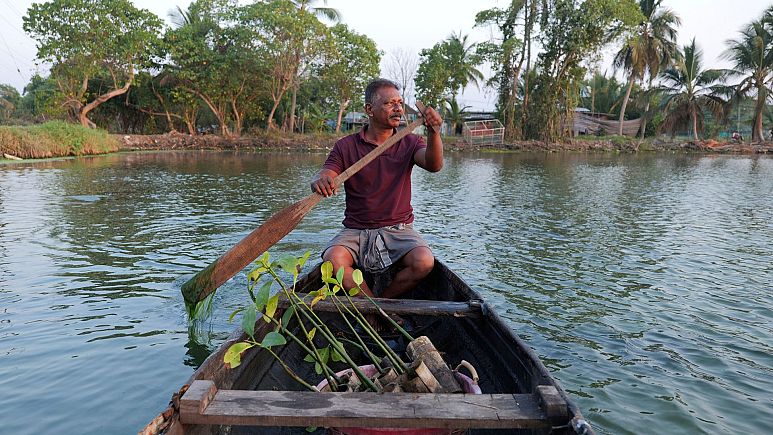 INDIA – Sea level rise and severe tidal floods are forcing residents of India’s Vypin Island to relocate to higher ground. “The floods are occurring more frequently and lasting longer,” says T P Murukesan, who lives on the low-lying island of India’s western coast. The last flood was chest-height for his young grandson. “Every flood brings waters this high, we just deal with it.” In his raised home, white paint peels off the damp walls. But the retired fisherman has almost single handedly been buffering the impacts of the rising waters in his community. Known locally as ‘Mangrove Man’, Murukesan has turned to planting the trees along the receding shores of Vypin in the Kochi region of Kerala state. Murukesan says he has planted over 100,000 mangroves. He plants saplings on alternate days and does most of the work himself. The mangroves he planted in and around the area in 2014 have grown into a dense thicket and are helping reduce the intensity of tidal flooding, he says. Some help comes in the form of saplings from the M S Swaminathan Research Foundation, a non-government organisation based in Chennai, India. INDIA – Sea level rise and severe tidal floods are forcing residents of India’s Vypin Island to relocate to higher ground. “The floods are occurring more frequently and lasting longer,” says T P Murukesan, who lives on the low-lying island of India’s western coast. The last flood was chest-height for his young grandson. “Every flood brings waters this high, we just deal with it.” In his raised home, white paint peels off the damp walls. But the retired fisherman has almost single handedly been buffering the impacts of the rising waters in his community. Known locally as ‘Mangrove Man’, Murukesan has turned to planting the trees along the receding shores of Vypin in the Kochi region of Kerala state. Murukesan says he has planted over 100,000 mangroves. He plants saplings on alternate days and does most of the work himself. The mangroves he planted in and around the area in 2014 have grown into a dense thicket and are helping reduce the intensity of tidal flooding, he says. Some help comes in the form of saplings from the M S Swaminathan Research Foundation, a non-government organisation based in Chennai, India. Feature Video Will Charouhis – A Million Mangroves Meet Will Charouhis, founder of We are Forces of Nature, a nonprofit combating climate change and protecting coastlines through initiatives like A Million Mangroves. Despite the challenges of planting mangroves, Will’s perseverance has led to over 1,000 seedlings being planted in the past two years. As he continues field research to improve seedling growth, he encourages all to join the fight against climate change. Pease consider donating to MAP to keep it going. *Articles in this newsletter may mention practices being used and/or show exagerated results being claimed without proof. Stories are presented here in effort to show mangrove related activity around the world and do not necessarily reflect Mangrove Action Project’s views or mangrove restoration best-practices. NOTICEChildrens Art Calendars 2024 CONTEST TO START SOON!
ACTION ALERTSDo not sacrifice Congo’s rainforests to the oil industry! TAKE ACTION TAKE MAP SURVEY Please see the survey questionnaire we at MAP put together to discover where the shrimp industry is still having major adverse effects on mangroves and local communities. Stop this total madness Stop the biggest heated oil pipeline in the world — right through the heart of Africa! Like this newsletter? Pease consider donating to MAP to keep it going. Giving could never be easier MAP Website en Español 13 Year old Linda Li “Mangrove Adventure” from Kid Dream Art School
Video: Mangroves for the Future WANT TO GET INVOLVED?
Interested in connecting or working with MAP? Check out our opportunities here MANGROVE ISSUES Want to learn more about mangroves? What is CBEMR? View MAP’s uploaded Videos at Question Your Shrimp Consumer/Markets Campaign! Mangroves: Guidebook to Malaysia SHARE MAP’S VISION Our short documentary, Reducing the Risk of Disaster through Nature-Based Solutions : Mangroves Marvellous Mangroves Curriculum The Marvellous Mangroves Curriculum begins with a simple philosophy – getting future generations to not only learn about, but understand the importance of mangrove forests. VISIT Marvellous Mangroves Curriculum in Bangladesh – WATCH VIDEO
Like this newsletter? Pease consider donating to MAP to keep it going. Giving could never be easier *Articles in this newsletter may mention practices being used and/or show exagerated results being claimed without proof. Stories are presented here in effort to show mangrove related activity around the world and do not necessarily reflect Mangrove Action Project’s views or mangrove restoration best-practices. | |
Mangrove Action Project Click here to view past newsletters
| |

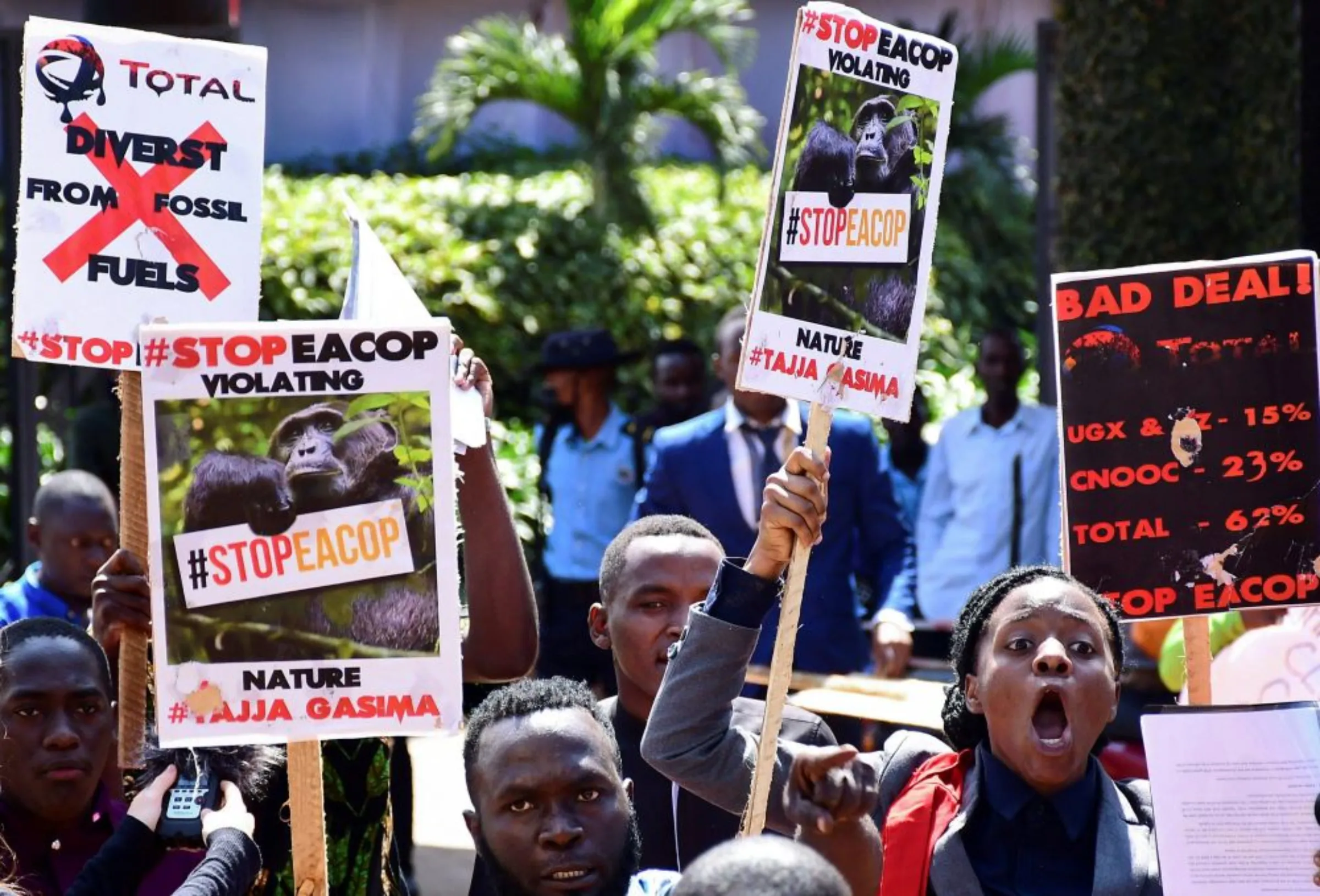 UGANDA – Ugandan environmental campaigner Judith Bero-Irwoth has spent years warning of the risks of a planned crude oil pipeline and its impact on communities in the west of the country. Protests by activists like Bero-Irwoth have ramped up in the Albertine Graben region and the capital, Kampala, in recent years since France’s TotalEnergies and China National Offshore Oil Corporation struck deals to develop Uganda’s oil fields. The agreements include the proposed $3.5-billion East African Crude Oil Pipeline (EACOP), which would ship crude from Lake Albert in Uganda to global markets through a port on Tanzania’s Indian Ocean coast. Development groups have raised alarm about the impacts on the climate – saying the pipeline will generate 34 million tonnes of carbon emissions annually – and on communities, as an estimated 14,000 households are at risk of losing their land. But climate campaigners are increasingly being targeted and stifled under the Public Management Order Act and legislation governing NGOs, said Dickens Kamugisha, chief executive of the Kampala-based Africa Institute for Energy Governance (AFIEGO). Bero-Irwoth said she had become more cautious since police stormed her home in Buliisa district in September 2021 during a community meeting about the oil development plans.
UGANDA – Ugandan environmental campaigner Judith Bero-Irwoth has spent years warning of the risks of a planned crude oil pipeline and its impact on communities in the west of the country. Protests by activists like Bero-Irwoth have ramped up in the Albertine Graben region and the capital, Kampala, in recent years since France’s TotalEnergies and China National Offshore Oil Corporation struck deals to develop Uganda’s oil fields. The agreements include the proposed $3.5-billion East African Crude Oil Pipeline (EACOP), which would ship crude from Lake Albert in Uganda to global markets through a port on Tanzania’s Indian Ocean coast. Development groups have raised alarm about the impacts on the climate – saying the pipeline will generate 34 million tonnes of carbon emissions annually – and on communities, as an estimated 14,000 households are at risk of losing their land. But climate campaigners are increasingly being targeted and stifled under the Public Management Order Act and legislation governing NGOs, said Dickens Kamugisha, chief executive of the Kampala-based Africa Institute for Energy Governance (AFIEGO). Bero-Irwoth said she had become more cautious since police stormed her home in Buliisa district in September 2021 during a community meeting about the oil development plans. COSTA RICA – Restoration of Bahía Tomas in La Cruz, Guanacaste is one of the latest initiatives by the Davivienda-GIZ-ACG-FPN alliance. This collaborative effort is working towards restoring and preserving the mangrove ecosystem, which has been damaged by climate change and human activities. The project aims to restore three hectares of the Bahía Tomas mangrove ecosystem by the end of 2023. In addition, ten hectares of damaged mangroves will be closely monitored to begin the restoration and conservation process. Biomonitoring and adaptation actions are being carried out to lower salinity, where natural regeneration has not been possible. The alliance’s efforts to preserve the mangroves go beyond restoration. They also support local communities that depend on the ecosystem for their livelihoods. The Cuajiniquil women’s cooperative – Coopemprendedoras – has benefited the most environmentally, socially, and economically from the mangrove restoration. They have been working to obtain a food truck to promote their work, and GIZ is helping them define a business plan and provide the necessary assets and marketing tools to enable the cooperative’s project.
COSTA RICA – Restoration of Bahía Tomas in La Cruz, Guanacaste is one of the latest initiatives by the Davivienda-GIZ-ACG-FPN alliance. This collaborative effort is working towards restoring and preserving the mangrove ecosystem, which has been damaged by climate change and human activities. The project aims to restore three hectares of the Bahía Tomas mangrove ecosystem by the end of 2023. In addition, ten hectares of damaged mangroves will be closely monitored to begin the restoration and conservation process. Biomonitoring and adaptation actions are being carried out to lower salinity, where natural regeneration has not been possible. The alliance’s efforts to preserve the mangroves go beyond restoration. They also support local communities that depend on the ecosystem for their livelihoods. The Cuajiniquil women’s cooperative – Coopemprendedoras – has benefited the most environmentally, socially, and economically from the mangrove restoration. They have been working to obtain a food truck to promote their work, and GIZ is helping them define a business plan and provide the necessary assets and marketing tools to enable the cooperative’s project. 




